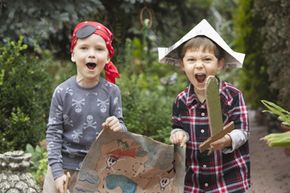Not so long ago, "birthday party" meant hot dogs, sheet cake and balloons. "Children's-party planner" meant "you." It may seem passé in the face of thousand-dollar dos, but plenty of people are still choosing to go the old-school route, praying the weather holds, decorating the yard and loading up the barbecue.
Sometimes it's a financial thing. Sometimes it's simple preference. Either way, it's about turning your home into a bastion of fun, and adding an organized game to the mix can provide a nice break from the chaos -- especially if that game is a treasure hunt.
Advertisement
The backyard treasure hunt has everything: sunshine, mystery, scalability for ages and budgets, and treasure. Sweet, sweet treasure.
A treasure hunt for a 4-year-old is different from one for a fifth-grader, but the hunt itself has a standard design. It starts with a clue. The job of that clue, and each one that follows, is to give the players hints as to the location of the next clue, until the very last clue of the game, which leads to the treasure.
The game can be as simple or as complex as you want, but setting out to design a 20-clue, multimedia treasure hunt can turn the most determined parent (and partygoer, for that matter) into a quitter. You needn't wow or stump. You need only entertain until it's time to cut the cake.
For now, resist the urge to compose some brilliant clues. Designing a backyard treasure hunt starts not with rhymes or riddles. It starts with a bird's-eye view.
Advertisement


